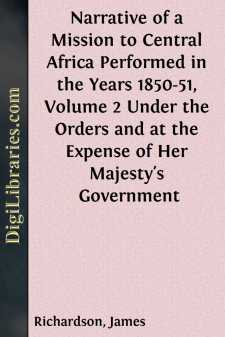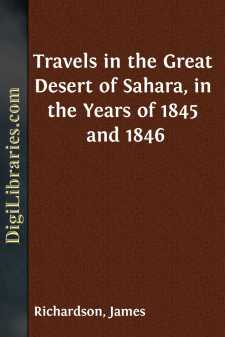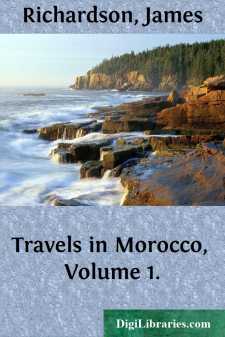Categories
- Antiques & Collectibles 13
- Architecture 36
- Art 48
- Bibles 22
- Biography & Autobiography 813
- Body, Mind & Spirit 142
- Business & Economics 28
- Children's Books 17
- Children's Fiction 14
- Computers 4
- Cooking 94
- Crafts & Hobbies 4
- Drama 346
- Education 46
- Family & Relationships 57
- Fiction 11829
- Games 19
- Gardening 17
- Health & Fitness 34
- History 1377
- House & Home 1
- Humor 147
- Juvenile Fiction 1873
- Juvenile Nonfiction 202
- Language Arts & Disciplines 88
- Law 16
- Literary Collections 686
- Literary Criticism 179
- Mathematics 13
- Medical 41
- Music 40
- Nature 179
- Non-Classifiable 1768
- Performing Arts 7
- Periodicals 1453
- Philosophy 64
- Photography 2
- Poetry 896
- Political Science 203
- Psychology 42
- Reference 154
- Religion 513
- Science 126
- Self-Help 84
- Social Science 81
- Sports & Recreation 34
- Study Aids 3
- Technology & Engineering 59
- Transportation 23
- Travel 463
- True Crime 29
Narrative of a Mission to Central Africa Performed in the Years 1850-51, Volume 2 Under the Orders and at the Expense of Her Majesty's Government
by: James Richardson
Description:
Excerpt
CHAPTER I.
Description of Tintalous and its Environs—Palace and Huts—Bedsteads—Kailouee Race—Unhandsome Conduct of Mr. Gagliuffi—Proposed Journey to Aghadez—Dr. Barth starts—An obstinate Bullock—Present extraordinary—State of Zinder—Affability of the Sultan—Power of Charms—Scorpions—Dialogue with a Ghâtee—Splendid Meteors—Visit from En-Noor—Intrigues of the Fellatahs—A Sultan loaded with Presents—Talk of departing for Zinder—State of the Bornou Road—Division of a Bullock—Bottle of Rum stolen—More Visits from the Sultan—A Musical Entertainment—Curious Etymological Discussions—A wonderful Prophetess—Secret Societies—Magicians—The Evil Eye—Morality of Soudan—Magnificent Meteor—Stories of the Sfaxee.
I begin at length to consider myself as it were at home in this singular country of Aheer—without, however, experiencing any desire to dally here longer than the force of circumstances absolutely requires. It must be confessed, as I have already[2] hinted, that the town of Tintalous, in front of which we are encamped, does not at all answer the idea which our too active imagination had formed. Yet it is a singular place. It is situated on rocky ground, at the bend of a broad valley, which in the rainy season becomes often-times the bed of a temporary river. Here and there around it are scattered numerous trees, many of considerable size, giving the surface of the valley something of a park-like appearance. The herbage is not rich, but it is ornamental, and refreshes the eye in contrast with the black, naked rocks, which rise on all hands to the height often of two or three thousand feet. To the east, it is true, the country is a little open; and between the mountains run in numerous white sandy wadys, sprinkled with fresh green plants, or shaded by various species of mimosa and other spreading trees, under which the shepherds and herdsmen find shelter from the sun.
The principal feature of Tintalous itself is what may be called the palace of En-Noor. It is, indeed, one, compared with the huts and stone hovels amidst which it is placed. The materials are stone plastered with mud, and also the wood of the mimosa tree. The form is an oblong square, one story high,[3] with an interior courtyard, and various appendages and huts around on the outside. There is another house, and also a mosque built in the same style, but much smaller. Of the rest of the habitations, a few are stone sheds, but the greater part are huts made of the dry stalks of the fine herb called bou rekabah, in the form of a conical English haystack, and are very snug, impervious alike to rain and sun. There are not more than one hundred and fifty of these huts and sheds, scattered over a considerable space, without any order; some are placed two or three together within a small enclosure, which serves as a court or yard, in which visitors are received and cooking is carried on. There is another little village at a stone's-throw north. The inhabitants of these two villages consist entirely of the slaves and dependants of En-Noor.
All around Tintalous, within an hour or two hours' ride, there are villages or towns of precisely the same description, more or less numerously peopled. At Seloufeeat and Tintaghoda, however, we saw more houses built of stone and mud. This may be accounted for by the fact that the inhabitants are not nearly so migratory as those of Tintalous, who often follow in a body the motions of their master, so that he is ever surrounded by an imposing household.
I must not omit mentioning an important article of furniture which is to be observed in all the[4] houses of Aheer—namely, the bedstead. Whilst most of the inhabitants of Fezzan lie upon skins or mats upon the ground, the Kailouees have a nice light palm-branch bedstead, which enables them to escape the damp of the rainy season, and the attack of dangerous insects and reptiles like the scorpion and the lêfa.
I shall hereafter make a few observations on the tribes inhabiting Aheer....






